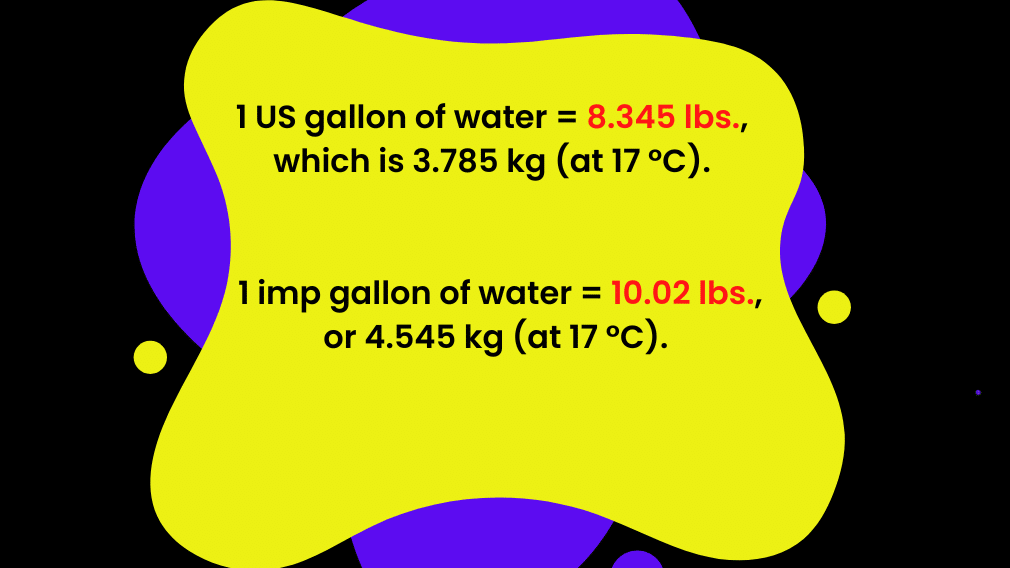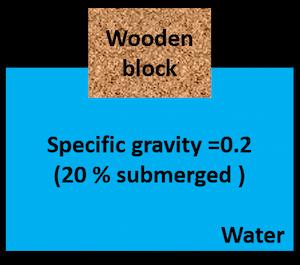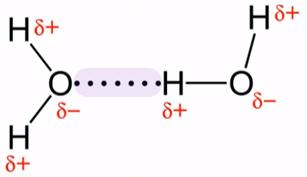One US gallon of water weighs 8.345 pounds or 3.785 kg at 17 °C, whereas one Imperial gallon of water weighs 10.02 pounds or 4.545 kg at 17 °C.
1 US gallon (gal) is 16.6% lighter than the Imperial gallon.
This article explains the question, “How much does a gallon of water weigh?”

Table of Contents
The Weight of Water per Gallon
The weight of a gallon of water depends upon the temperature of the water, For the sake of the question, ‘How much does a gallon of water weigh?’, we are going to focus on the weight of fresh water at 62 °F (17 °C).
1 US gal of water = 8.345 pounds, which is 3.785 kg (at 17 °C).
1 imperial gal of water = 10.02 pounds, or 4.545 kg (at 17 °C).
The weight of 1 liter (l) of pure water (at 4 °C) is equal to 1 kilogram (kg).
Units of Gallon
There are three different units of a gallon:
| Weight of a Gallon of Water | Fluid ounces | Liters | lbs | Kg |
| 1 US gallon of water at 17 °C | 128 | 3.785 | 8.345 | 3.785 |
| 1 Imperial gallon of water at 17 °C | 153.72 | 4.545 | 10.02 | 4.545 |
| 1 US dry gallon of water at 17 °C | 128 | 4.405 | 9.711 | 4.405 |
How much does 1 gallon of water weigh?
1 cm3 of water = 1 ml = 1 g.
1 liter of water = 1000 ml = 1 kg = 1000 g.
1 US gallon of water equals 3.785 liters or 3.785 kg.
1 UK gallon of water = 4.546 liters = 4.546 Kg.
The Effect of Temperature on the Weight of Water
Even moderate fluctuations in temperature do affect the weight of water.
When we heat up water, we increase the energy of water molecules.
As a result, the kinetic energy of water molecules increases, and they get more spaced out.
Therefore, the amount of space each molecule needs is greater.
This results in a decrease in the density of water.
Therefore, the density of the cold water is greater than it would be in the hot water.
Effect of Density on Weight of Water
Water has a maximum density of 39.2ºF or 4ºC.
At this temperature, a gallon of water weighs around 8.345 lbs.
If we turn the heating way up to 200ºF though, a gallon of water will weigh around 8.04 lbs.
At room temperature (70°F or 21°C), a US gallon of water weighs 8.33 lbs (3.78kg).
The temperature of the water can affect the density of the water.
The density of water in g/ml.
The density of water in g/ml is around 1 gram per milliliter, but, this changes with temperature or if there are substances dissolved in it. Ice is less dense than liquid water. That’s why ice cubes float on water.
A common unit of measurement for water’s density is grams per milliliter (1 g/ml) or 1 gram per cubic centimeter (1 g/cm3). The density of water on Earth at 4°C is 1000 kg/m3.
The specific weight of water
The specific weight of water on Earth at 4°C is 9.807 kN/m3 or 62.43 lbf/ft3.
It is defined as the weight per unit volume of a material.
Its symbol is γ.
Calculations
The density of water at 4°C (1 atm) is 1000 kg/m3.
Acceleration of gravity (g) on the surface of the earth at sea level = 9.807 m/s2.
Weight = m x g = density x volume x g (using density, mass, and volume relations)
Specific weight (γ) = (density x volume x g)/volume
γwater = density x g = 1000 kg/m3 x 9.807 m/sec2 = 9.807 kN/m3 ( 1 N = kgm/s2)

Example Problem-Density of Water
The mass of 5 liters of water is 5 kg. Its density will be:
Volume = 1 liter = 10-3 m3
5 liters = 5×10-3 m3.
mass = 5 kg.
density = mass/volume.
The density of water is 5 kg/5×10-3 m3 = 1000 kg/m3.
Why does ice float on water?
Solid water (ice) is less dense than liquid water.
Every water molecule is made up of two hydrogen atoms bonded to one oxygen atom.
Due to its molecular structure, water behaves abnormally when cooled.
It continues to contract and reduce in volume until 4°C.
Water has a maximum density of 39.2ºF or 4ºC.
Beyond this point, its volume increases and becomes more than the initial volume.
This results in a decrease in density. That’s why ice is lighter than liquid water.
The specific gravity of water
The specific gravity of water is one at 4 degrees Celsius.
The specific gravity of a substance tells us how much it is heavier than water.
In simple words, the specific gravity of an object is the density of an object divided by the density of water. The specific gravity of water is one.
There are no units for specific gravity. It’s a ratio.
For something that floats, the specific gravity tells us what fraction of that object will be below the water while it’s floating. For instance, let a cube of wood with a specific gravity of 0.2 float on water. A specific gravity value of 0.2 means that 20% of the wooden cube will be submerged in water.

Hydrogen bonding in Water

In Hydrogen bonding, a hydrogen atom is weekly attracted to another atom that is already bonded to some other atom in another molecule.
In water, the hydrogen atom, which is a little bit positive, from one water molecule is weekly attracted to an oxygen atom which is a little bit negative in a neighboring water molecule.
How many liters are in cubic centimeters?
1 L = 1dm3.
1 L = (10 cm)3 = 1000 cm3 .
1 cm3 = 10-3 liters.
Example Problems
Question: A tank containing 5000 gallons of water. How much does water weigh in pounds?
At room temperature (70°F or 21°C), a US gallon of water weighs 8.33 lbs (3.78kg).
Each gallon of water weighs 8.33 pounds, so 5,000 gallons = 5,000(8) = 41,650 pounds (18900kg).
Question: How much does 24 oz water weigh in grams?
1 gallon = 128 fluid ounces.
1 US gallon of water = 8.345 lbs = 3.785 kg = 484.48 oz.
So 24 oz = 0.1875 kg = 187.5g.
Question: How much do 300 gallons of water weigh?
1 US gallon of water = 8.345 lbs = 3.785 kg.
1 Imperial gallon of water = 10.02 lbs = 4.545 kg.
300 US gal of water = 2503.5 lbs = 1135.5 kg.
300 Imp gal of water = 3006 lbs = 1363.5 kg.
Question: How much does a gallon of water weigh in grams?
1 US gallon of water = 3.785 kg = 3785g
1 Imperial gallon of water = 4.545 kg = 4545g.
Question: How much does a gallon of liquid hydrogen weigh?
1 US liquid gallon =3.785 liters = 3785 cm3.
Density of liquid hydrogen= 0.70 g/cm3.
A US gallon of liquid hydrogen weight = (0.70g/cm3)x(3785 cm3) = 2649.5g = 2.6495 kg.
Question: How much would the volume of ice (density = 0.92 kg/liter) form by freezing 1 liter of water?
The volume of water at 4C = liter
The mass of water is equal to 1 kg.
The density of ice is 0.92 kg/liter.
Volume of ice = mass/density = 1 kg/0.92 kg liter-1
The volume of ice formed by freezing 1 liter of water = 1.09 liters.
Important Links
Related Links
How Many Bottles Of Water Equal A Gallon
Specific Heat Concept
Concentration Gradient Definition
Cubic Foot of Water Weight
Unit Weight of Water
Viscosity of Water
Summary
At 17 °C, one US gallon weighs 8.345 pounds or 3.785 kg, but one Imperial gallon weighs 10.02 pounds or 4.545 kg. One US gallon weighs 16.6 percent less than one Imperial gallon.
Frequently Asked Questions
Some of the frequently asked questions are given below
1. how many cups are in a liter of water?
A cup is equal to 250 mL, and a liter is equal to 1,000 mL. As a result, the number of cups in a liter is 1000 divided by 250, which equals 4 cups. Check the full article “How Many Cups in a Gallon? Cups to Pints, Quarts”.
2. What is a water molecule and how many hydrogen atoms are in a molecule?
Water is a substance that exists in gaseous, liquid, and solid phases and is made up of the chemical elements hydrogen and oxygen. It is one of the most abundant and necessary chemicals. At room temperature, it is a tasteless and odorless liquid with the critical capacity to dissolve many other compounds. Water’s capacity as a solvent is critical to living creatures.
A water molecule consists of two hydrogen atoms attached to the sides of a single oxygen atom.
3. How many glasses of water are in one liter of water?
A glass of water holds around 8 ounces, but a liter holds 32 ounces.
1 liter is equivalent to four glasses of water. Therefore one liter equals four glasses of water.
1 US gal = 8.345 lbs.
1 Kg = 2.205 lbs.
5 US gallon of water = 18.925 liters = 41.725 lbs.
Imp gallon = 4.546 liters.
US gallon = 3.785 liters.
Mass = Density x Volume.
Dry loose sand density = 1.442 kg/liter.
In Imperial gallon, the mass is:
1.442 kg/l x 4.546 l = 6.55 kg.
For the US gallon, the corresponding mass is:
1.442 kg/l x 3.785 l = 5.458 kg.
A US gallon is 3.785 liters, so it weighs 3.785 kilograms.
The specific gravity of raw milk is about 1.033 to 3.785 x 1.033 = 3.909 kg.
Also, in pounds, it’s 3.909 kg x 2.2 = 8.601 pounds.
Milk is denser (has a specific gravity greater than 1) due to the presence of sugars (lactose) & proteins. There’s also lighter than water cream mixed in there.
Weight of 1 liter (l) of pure water at temperature 4 °C = 1 kilogram (kg).
1000 liters of water = 1000 kg
A US gal of water weighs 8.345 pounds (3.785 kg) and an Imperial gal weighs 10.02 pounds (4.545 kg).
1 US gal =128 fl ounces.
300 US gal =2503.5 pounds = 1135.5 kg.
300 Imp gal = 3006 pounds = 1363.5 kg.
More Interesting Links
Dynamic Viscosity-An Overview
Concentration Gradient Definition| Easy Examples
Kinematic Viscosity of Water
- BCl3 Lewis Structure in four simple steps - November 1, 2023
- PH3 Lewis Structure in four simple steps - October 8, 2023
- PF3 Lewis structure in four simple steps - September 24, 2023



